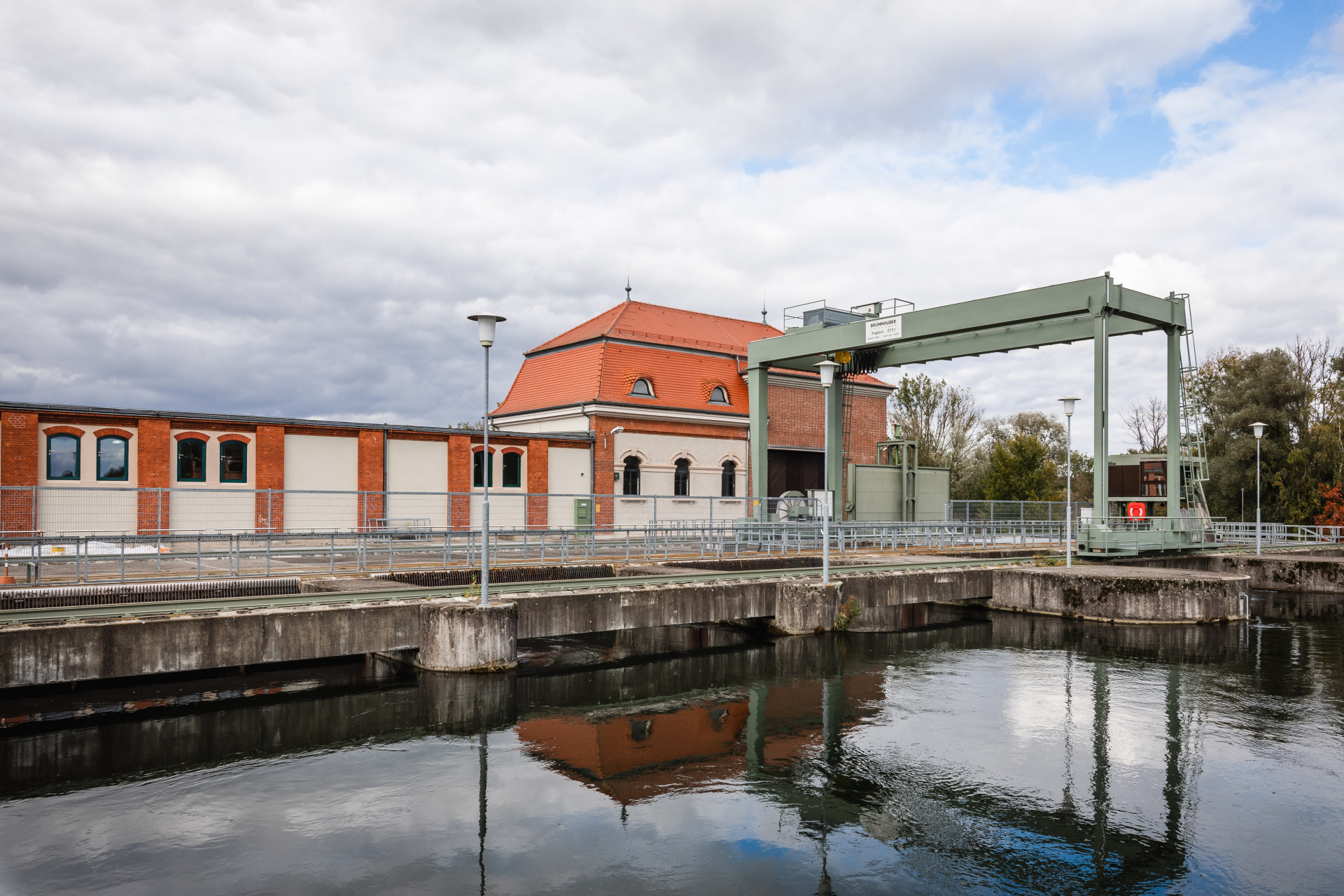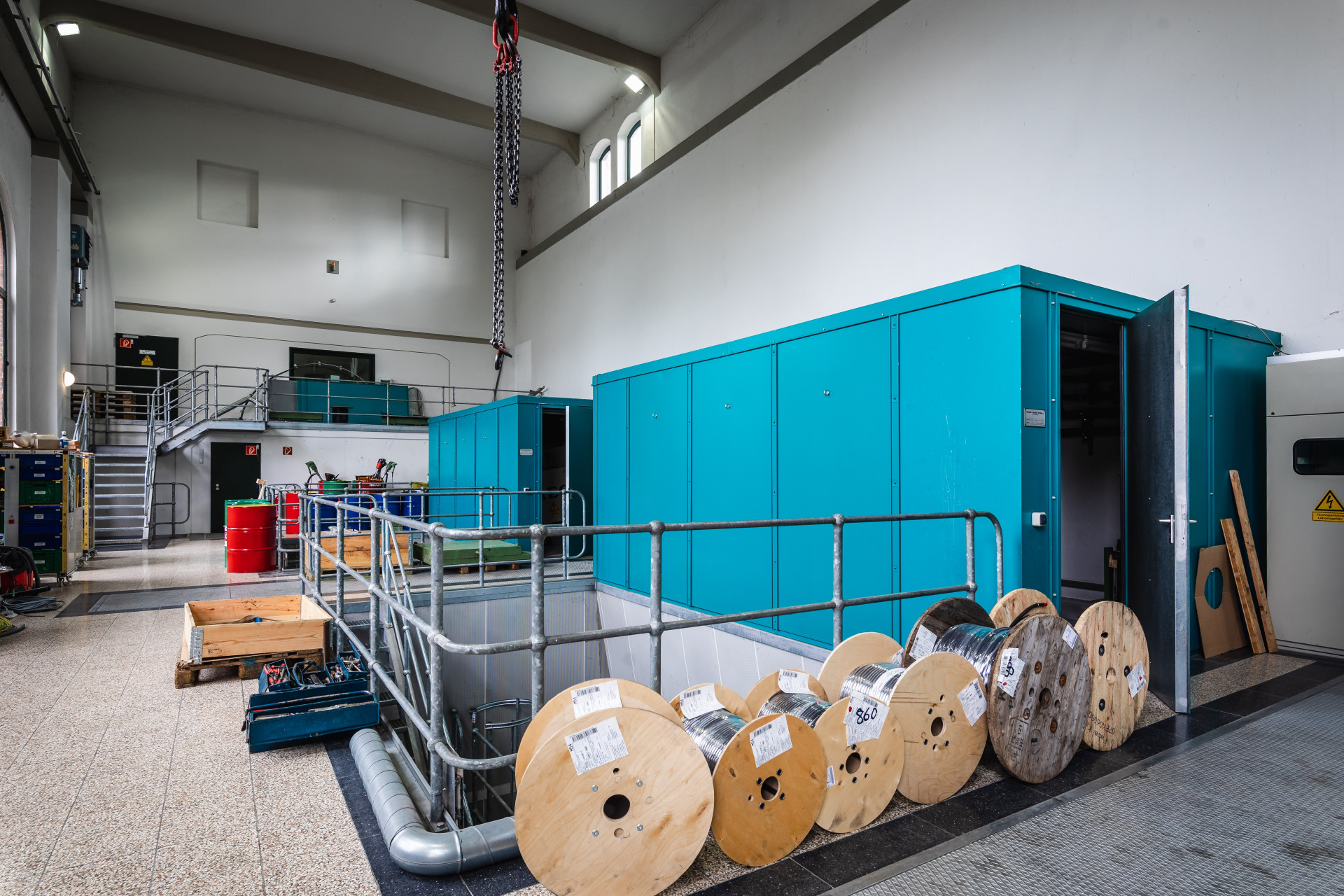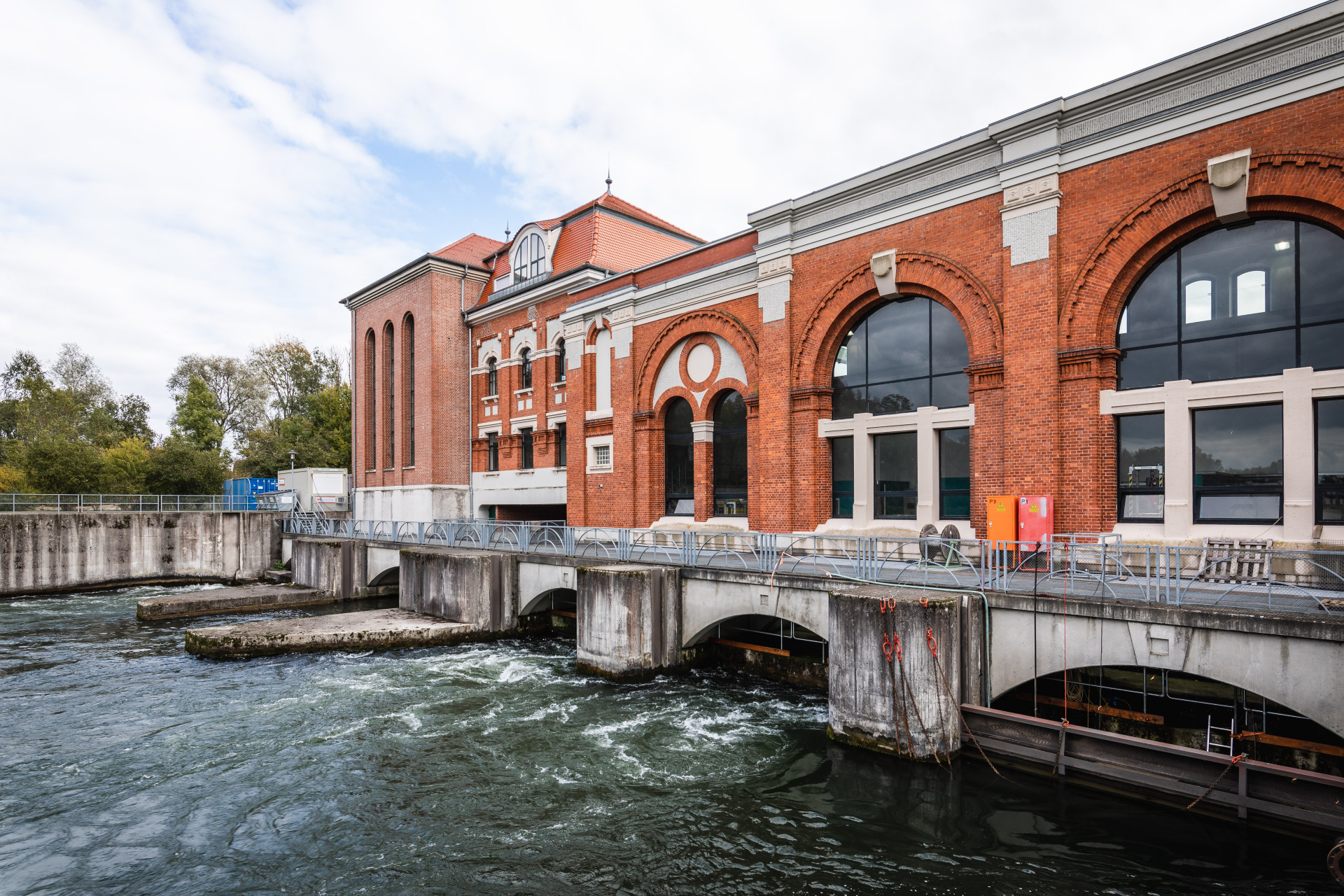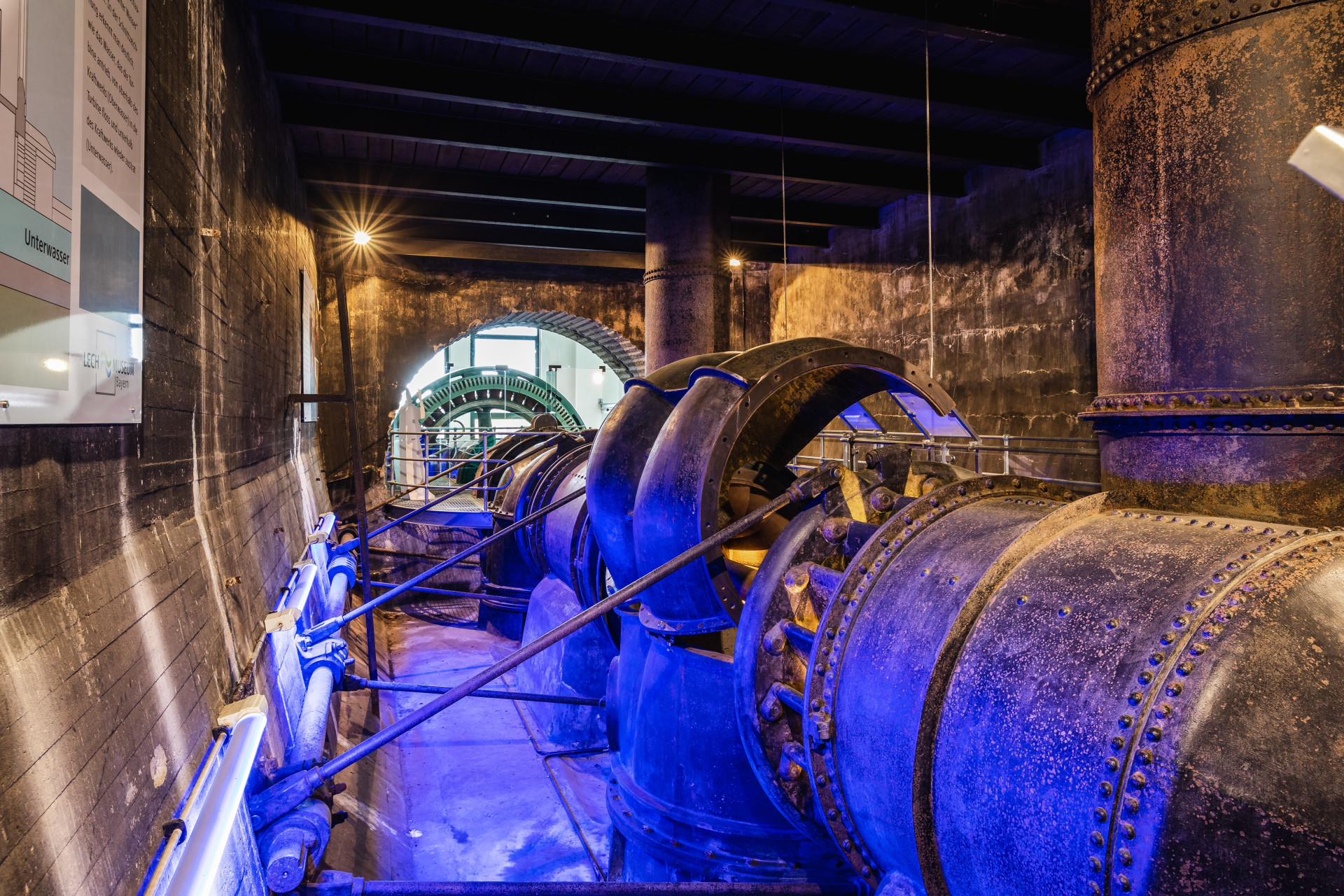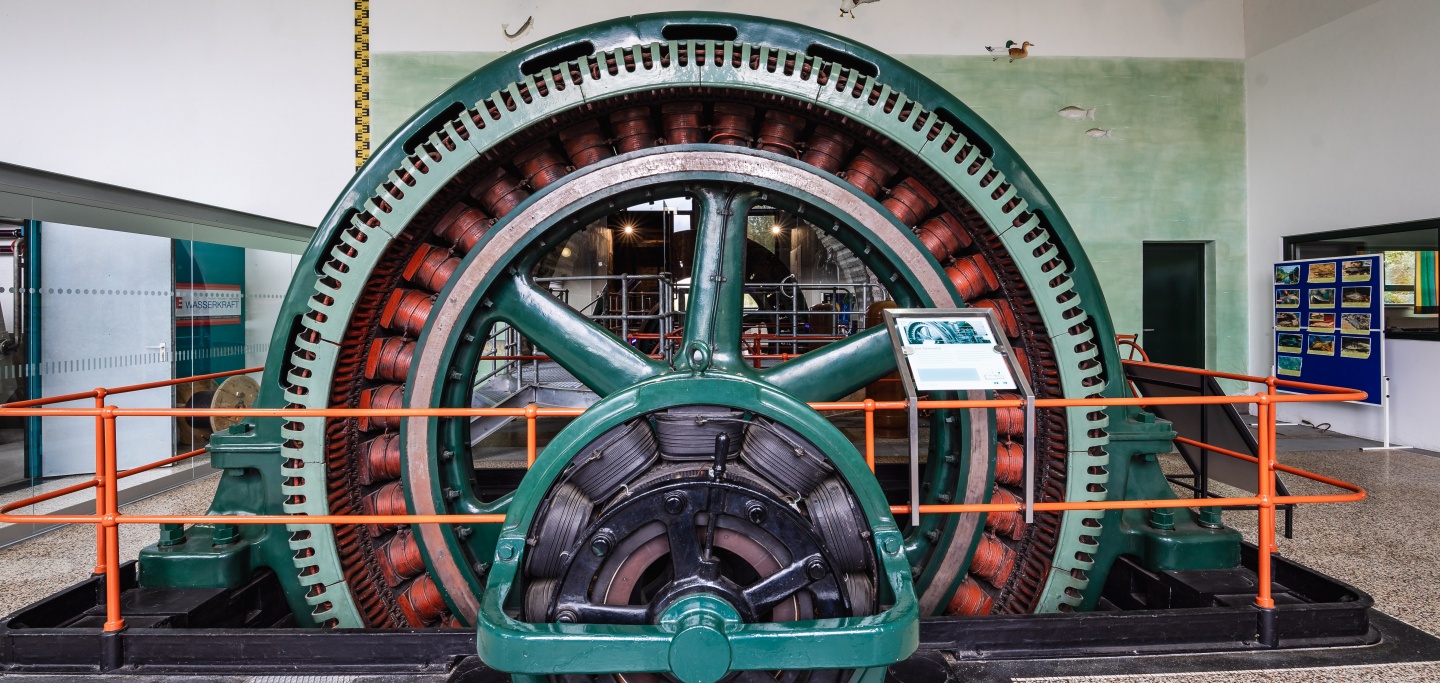
18
Power plant Langweid
This second power station on the Lech canal was built in a similarly elaborate design as the plant in Gersthofen. It has been producing electricity since 1907, initially for a factory, then for the general supply. Today, it is home to the Lechmuseum Bayern, which features the river as well as impressive technical installations.
Building history and description
- Hydroelectric power plant, still in operation today
- community Langweid, Landkreis Augsburg; Lechwerkstraße 19
- Start of sewer excavation 1898
- Commissioning 1907
- two-story superstructure of the empty shot 1938
- first replacement of three turbines in 1957
- second exchange of three turbines and all generators in 1993
- Opening of the Lechmuseum Langweid 2008
- Castle-like brick building in the style of historicism (strongly based on the power plant in Gersthofen)
- elongated, two-storey solid construction with single-storey side wings
- Facade in exposed brickwork with pilasters and white decorative elements
- Round arched windows with steel rungs
- longitudinal building with flat roof
- three-storey buildings to the east and west with hipped roofs covered in beaver tail
- self-supporting machine hall with 10.5m height and 13m width with filigree riveted steel truss girders and crane runway in 8m height
Use and purpose
- Hydropower plant for power generation (first for company, then for region)
- Switchgear in overbuilding of the lock (unknown year)
- Administration and former control room in the west wing (control from the power plant in Gersthofen today)
- Technical Equipment
- One 1907 Francis turbine
- One 1907 Siemens-Schuckert-generator
- One Kaplan turbine with vertical wave from Voith
- One 1938 Siemens-Schuckert bell-ring generator
- three AEG generators from Escher Wyss
- three Kaplan turbines from Escher Wyss
- Power station on the Lech Canal built in three sections from 1898-1922
- Foundation of the Lechwerke 1903
- Lech Canal was extended by 2.5 km to Langweid until 1906
- Power plant as an object of the UNESCO nomination stands for:
- Further development from small-scale to industrial scale
- Further development from a simple waterwheel to a highly effective turbine
- early replacement of mechanical transfers of hydroelectric power in the region by electrification
- Early replacement of local hydropower and electricity generation by decentralized run-of-river power plants
- Use of renewable energies benefits the environment,
- "Augsburg tradition" of sustainability as a global role model
Authenticity and unique features
- Construction-time turbine as a showpiece (good traceability of the functioning of a turbine and the water supply), coupled to construction-time generator
- Turbine and generator from 1938 also preserved (still in operation today)
- Modernization of the three middle machine sets in 1993
- Use as a Lechmuseum
- technical equipment as a cross-section of the hydropower plant technology of the entire last century
- Providing technical development to a well-preserved, exemplary hydropower plant

